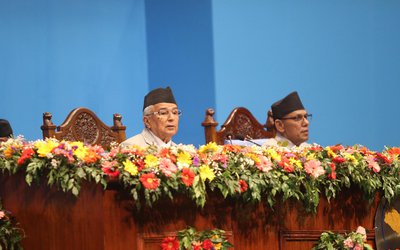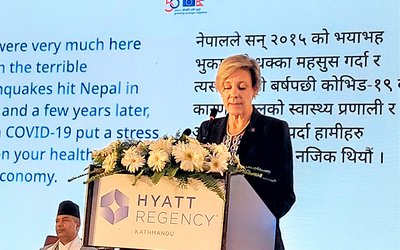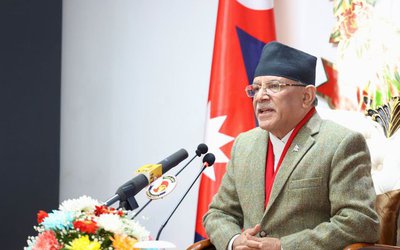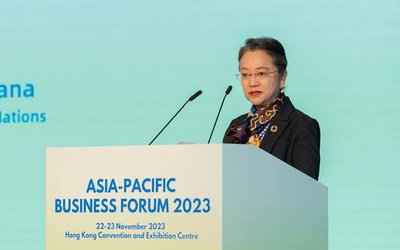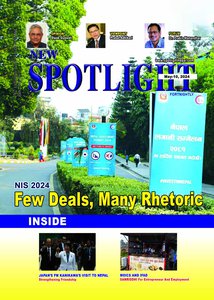The words of Prithvi Narayan Shah, in his Divyopadesh (Divine Counsel) keep coming back to my mind:
“The Kingdom is like a yam between two stones……………..”
Now that Prachanda (PKD) has won from Gorkha No. 2, will he build a ‘bigger than life statue of PNS’ to replace that which his Maoists tore down during their activity years?
The ease of travel from one point to another by land, sea or air around the world or even into space is good connectivity. But saying connectivity does not restrict one to travel. The tremendous strides in all sectors of humankind since the middle of the twentieth century, following the ending of World War II is what has brought us here to the present state and will propel us further into the future. Though ease of the passing on knowledge or new information from person to person, from generation to generation is also connectivity we will restrict ourselves to travel here.
Religious leaders and some politicians have been masters in the art of communication from time immemorial. After Julius Caesar’s assassination by Brutus in 44 BCE, Mark Antony with his speech turned the Roman mass against the murderers. In this age, Indian PM is a prime example of an expert in good connectivity. PM Modi, since he came into office has always laid stress on the concept of connectivity to bring about better co-ordination amongst SAARC & BIMSTEC countries He talks often with the Indian people with his ‘Mann ke Baat’.
The entry into Nepal by air is currently a single point via the Simara area. Nepal’s request to India is for entry from its western end plus also other areas across its southern border. For various reasons India has turned a deaf ear. Nepal’s problem has become acute following the opening of the GBIA at Lumbini. Permission for this would have facilitated the entry and reception of many foreign tourists to Nepal. Is this because giving permission to use this route would be detrimental to the functioning of the two new airports being constructed along Nepal’s southern border? One recollects that during his visit to Lumbini this year PM’s helicopter used the one at Kushinagar. Does this depict a non-neighbourly attitude to bring Nepal down to size? One recollects that PM Modi during his visit to Nepal had pronounced the need for connectivity in countries of South East Asia to forge ahead.
In the present context of the newly opened Gautam Buddha International Airport (GBIA), one hopes for direction of Indian officials to take a broad view of the Indo-Nepal relationship and facilitate granting of permission for more air entry points into Nepal. Besids this, the new international airport at Pokhara is a favourite destination for many Indian tourists to escape the hot Indian summers. Nepal’s need of more air entry / exit points is to ensure that flights can be increased to many destinations.
The slogan and the campaign ‘Buddha was born in Nepal’ has been a sore point in Indian eyes. A recent book by Ranjit Rae, former Indian ambassador to Nepal states that the origin of this was possibly the statement by External Affairs Minister S. Jaishankar that Buddha was one of two great Indians. PM Modi later corrected this in his speech to the Nepali Constituent Assembly in 2014 stating that Buddha, the apostle of peace in the world was born in Nepal. India’s opposition to the proper functioning of GBIA seems surprising when considering that the creation of ‘Lord Buddha Heritage’ site like that of the ‘Ram/Sita Heritage’ site circuit for tourists will be beneficial to both countries.
Though the Hulaki Marg constructed at the initiative was the first major road in southern Nepal there was no transport connection to the capital. This marg is being improved with Indian support. In terms of connectivity to the outer world it may be recalled the Tribhuvan Raj Path was the first major road built by the Indian Corps of Engineers to connect Kathmandu to its southern plains and to the outer world. It was in King Mahendra time that the East West Highway across Nepal and the access to China through Araniko Highway was made. Things have progressed further now to the extent that two more Trans Nepal highways named after Pushpa Lal and Madan Bhandari are in the finishing stages. India helped in connecting from the Indian border by way of Siddharth Highway to Pokhara. The British with our long military connection built the road from Biratnagar to Dharan. To meet petroleum demands pipeline was laid from India to Nepal. This enthusiasm for connectivity seems unstoppable considering that many of our local leaders all across the country bought excavators and started building roads willy-nilly across Nepal. Sadly such roads became bogged down and were the cause of many accidents resulting in death!
Nepal at one time had two railways – one from Amlekhganj to Raxaul and another between Jayanagar-Janakpur and Kurtha. There was a big gap of many decades when no railways functioned. The Jayanagar one has started with aid from India. Plans are afoot for not only a Trans Nepal railway but also connecting lines to both India and China. As gauges differ in the two countries no direct connection will occur. Time of function is however uncertain.
Nepal had has ropeways to transport goods. The increase of tourism in the country has brought about cable cars. Following on the steps of the one at Mankamana others have come up at Sarankot, Lumbini and Kalinchowk. A zipline to carry persons to Kushma in Parbat is functioning. Others projects are planned for both mobility and connectivity.
During the time of King Birendra, Nepal even had a ship in the ocean but it did not function for long. There are plans by entrepreneurs to have ships flying the Nepali flag on the high seas. One must however give due thanks to PM Oli who highlighted the fact Nepal must use Panijahaj on its water ways. Boats and steamers are now plying along the Narayani and other rivers in Nepal. One waits to see if they will ever reach the Bay of Bengal!
The author is a retired medical doctor and writes fiction under the pen name of Mani Dixit also. Website: www.hdixit.org.np. Twitter: @manidixit

Hemang Dixit
The author writes fiction under the name of Mani Dixit. Website: www.hdixit.org.np. Twitter: @manidixithd
- Top Heavy
- Sep 20, 2023
- Most Able?
- Sep 04, 2023
- Changing Times
- Aug 21, 2023
- Nepali Shenanigans
- Aug 03, 2023
- Budget Naataks
- Jun 29, 2023


